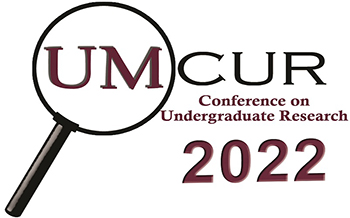Project Type
Presentation
Faculty Mentor’s Full Name
Ben Colman
Faculty Mentor’s Department
W.A. Franke College of Forestry & Conservation
Abstract / Artist's Statement
The role of time as an important factor in restoration of riparian ecosystems toward a reference state is well known. Ecosystem engineers, such as beaver, can have substantial influences on ecosystem characteristics, and thus they may play a large role in ecosystem recovery, however the role of beavers in altering the rate of ecosystem recovery is not well described. In this study, we monitored the recovery of vegetation and soil characteristics at Ninemile Creek in western Montana. This site has been highly degraded by historic placer mining, which resulted in a stream channel bounded by ten-meter-high gravel piles, eliminating the riparian floodplain ecosystem. Restoration has consisted of gravel pile removal and configuration of a new river channel and connected floodplain. As recovery has proceeded, beaver have moved downstream from an upstream unmined reach. Our research examines the role of beaver activity and time in restoring the riparian ecosystem by comparing three reaches that were restored in 2014, 2016, and 2018. We gathered data from the three restored reaches as well as the upstream reference reach using point-line intercept transects to assess vegetation and surface cover. We also collected soil samples which we tested for soil moisture, soil organic matter, and the percent fine and percent coarse material. Additionally, we surveyed each restored reach to assess the number of beaver structures including dams and lodges. The presence of beaver structures led to soil with more moisture and higher organic matter content and was associated with higher vegetation cover, especially of woody vegetation. Because the oldest restored reach also was the only one with beaver structures, we cannot separate the influence of time from the influence of beaver. However, comparing data from all three reaches to the same data collected two years previously shows that beavers may increase the pace of restoration.
Category
Life Sciences
Assessing the Role of Time and Beavers in Driving Recovery following Restoration
UC 331
The role of time as an important factor in restoration of riparian ecosystems toward a reference state is well known. Ecosystem engineers, such as beaver, can have substantial influences on ecosystem characteristics, and thus they may play a large role in ecosystem recovery, however the role of beavers in altering the rate of ecosystem recovery is not well described. In this study, we monitored the recovery of vegetation and soil characteristics at Ninemile Creek in western Montana. This site has been highly degraded by historic placer mining, which resulted in a stream channel bounded by ten-meter-high gravel piles, eliminating the riparian floodplain ecosystem. Restoration has consisted of gravel pile removal and configuration of a new river channel and connected floodplain. As recovery has proceeded, beaver have moved downstream from an upstream unmined reach. Our research examines the role of beaver activity and time in restoring the riparian ecosystem by comparing three reaches that were restored in 2014, 2016, and 2018. We gathered data from the three restored reaches as well as the upstream reference reach using point-line intercept transects to assess vegetation and surface cover. We also collected soil samples which we tested for soil moisture, soil organic matter, and the percent fine and percent coarse material. Additionally, we surveyed each restored reach to assess the number of beaver structures including dams and lodges. The presence of beaver structures led to soil with more moisture and higher organic matter content and was associated with higher vegetation cover, especially of woody vegetation. Because the oldest restored reach also was the only one with beaver structures, we cannot separate the influence of time from the influence of beaver. However, comparing data from all three reaches to the same data collected two years previously shows that beavers may increase the pace of restoration.
